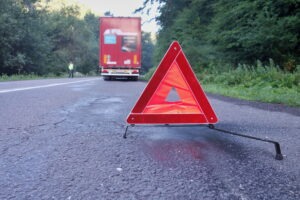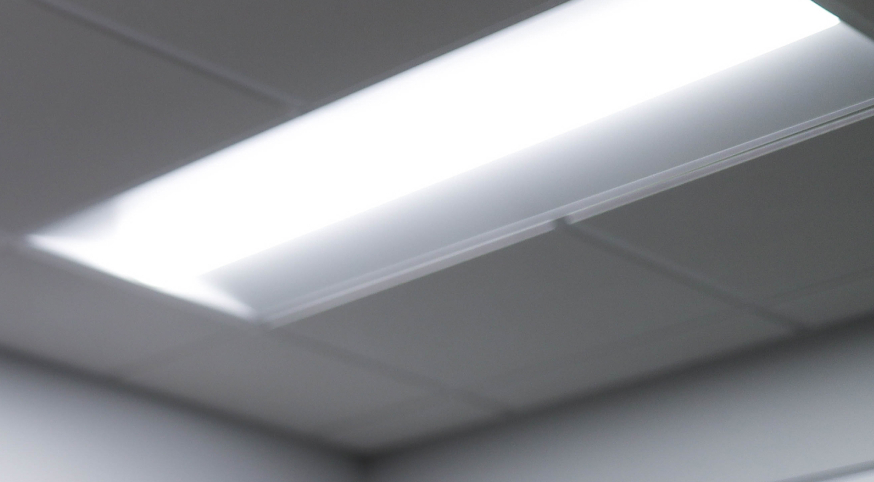
The proper emergency triangle placement for semi-trucks requires drivers to put one about 10 feet from the vehicle on the side of traffic, one about 100 feet from the vehicle on the shoulder or in the center of the traffic lane towards approaching traffic, and one about 100 feet from the vehicle on the shoulder or in the center of the traffic lane, away from oncoming traffic.
Truckers who fail to properly place emergency triangles when stopped on the side of the road can cause collisions. In this situation, you can turn to a truck accident attorney in Indianapolis for help. An attorney can determine if the trucker put the triangles in the wrong place and look for other signs of negligence.
What’s the Right Emergency Triangle Placement for Semi-Trucks?
The Federal Motor Carrier Safety Administration (FMCSA) provides information about the correct placement of emergency triangles in section 6.3.6 Emergency Warning Devices (392.22) of the Motor Carrier Safety Planner.
According to these regulations, truckers must place three warning devices when parked on the shoulder or highway for any reason outside of a necessary traffic stop. These devices must go:
- Four paces (10 feet) away from the truck, on the traffic side, towards approaching traffic
- 40 paces (100 feet) away from the truck, towards approaching traffic, on the shoulder, or at the center of the lane
- 40 paces (100 feet) away from the truck, away from approaching traffic, on the shoulder, or at the center of the lane
Truckers must place all three of these warning devices. An injury lawyer in Indianapolis may help if you sustain injuries in an accident caused by improper placement of emergency triangles.
Do Truckers Have to Use Emergency Triangles?
Truckers have to use warning devices when parked on the side of the road or shoulder outside of a necessary traffic stop. However, they have choices about the type of device and may not always have to use emergency triangles.
Instead, truckers may use:
- Warning triangles
- Liquid-burning flares
- Fusee flares
They must place these devices in the locations described above. If a trucker uses a flare, they must keep at least one lit at each location for the entire time they have their vehicle stopped.
You can learn more about these regulations and what the proper emergency triangle placement is for semi-trucks with an experienced attorney.
Your Case Will Get
The Attention It Deserves

How Soon Do Truckers Have to Place Emergency Triangles?
Truck drivers must set up warning devices within 10 minutes of stopping their vehicles. Additionally, the trucker must use the hazard warning system on the commercial vehicle when stopping on the road or shoulder.
The driver must leave the hazard warning system on until they have placed the warning devices. The driver has to turn the warning system on again when picking up the warning devices in preparation for leaving.
Failure to follow these steps can result in a collision. If you notice a driver incorrectly using warning devices, you may report a truck safety violation.
What Happens if Truckers Fail to Properly Place Emergency Triangles?
If a trucker does not properly place warning devices, another vehicle may strike a truck parked along the side of the road or on the shoulder. Therefore, improper emergency triangle placement can directly increase the chances of an accident.
If you believe improper warning device placement caused an accident that injured you, you may have a valid legal claim against the trucker driver or even the trucking company. An attorney can review your situation and determine if you qualify to file this type of claim.
Taking legal action after a crash can help you get payment for your:
- Current and future medical expenses
- Lost pay
- Costs to repair your vehicle
- Pain, suffering, and mental distress
An attorney can track all of these losses and ensure that you receive fair financial compensation. Depending on your situation, a lawyer may need to negotiate a settlement with the insurance company or help with a personal injury lawsuit.
It’s essential that you seek legal help quickly so a lawyer can gather all relevant evidence and handle legal communication. You can boost your chances of successfully resolving a claim by getting professional help.


Learn More About Emergency Triangle Placement for Semi-Trucks
What is the proper emergency triangle placement for semi-trucks in Indiana? When stopped on the road, truckers must place three warning devices around their commercial vehicles. Failure to follow this regulation can result in a crash.
If you sustain injuries in an accident, our team at Vaughan & Vaughan can help. We have over 110 years of experience assisting clients in Indiana and want to provide you with the guidance and support you deserve.
You can reach out to us immediately after a crash to discuss your next steps and your eligibility for compensation. We provide a risk-free initial consultation, so reach out to us now.




